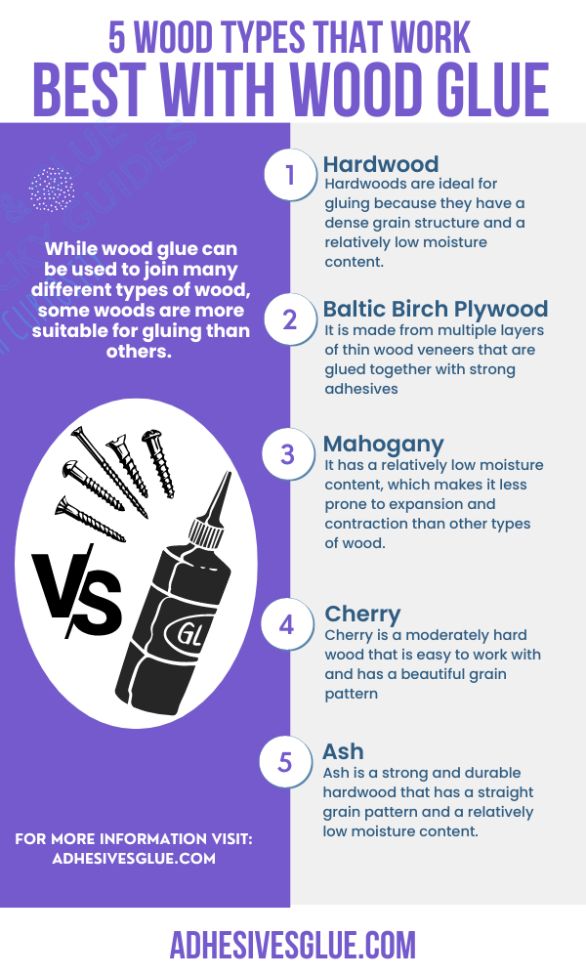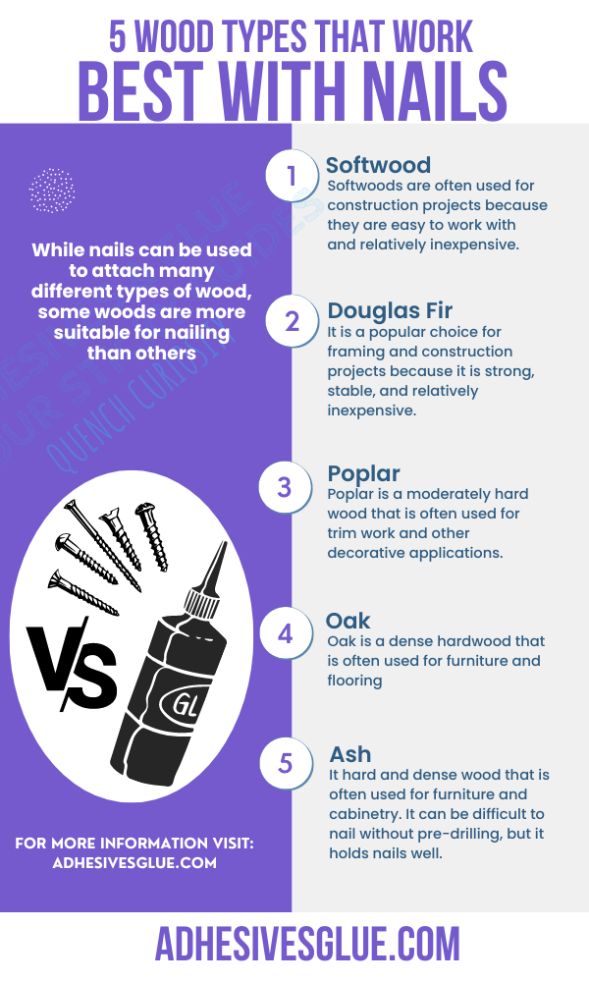When it comes to bonding wood, perhaps the most asked question is; Is wood glue stronger than nails? While both methods have been used for centuries, it’s important to understand the differences in their properties and application to determine which is the better choice for your project.
In some projects, both methods are used to ensure a strong bond while in some cases, one method will be preferred over the other.
In this blog post, we’ll delve deeper into the question, of whether wood glue and nails have similar withholding power, and examine the various factors that can impact the holding power of each method.
Contents
Strength of Wood Glue and Nails:
Let’s take a closer look at the differences between wood glue and nails and examine some of the factors to consider when deciding which method to use for your project, specifically in terms of strength.
Strength of Wood Glue:
Wood glue is specifically designed to provide a strong and durable bond when used to join pieces of wood together. You should consider the surface of the wood and prepare it accordingly before applying the glue. Once the glue is applied and the two pieces of wood are joined, the glue will dry and harden, creating a strong bond that can withstand a significant amount of weight and pressure.
In fact, in many cases, wood glue can be even stronger than the wood itself. This is because the glue seeps into the pores of the wood, creating a bond that is stronger than the wood fibers themselves.
Strength of Nails:
Nails are another popular method of joining pieces of wood together. While nails may not provide the same level of strength as wood glue, they can still be effective in certain situations. there are different types of nails you can use for certain projects.
One of the benefits of using nails is that they can provide additional support for joints that may not be as strong when using wood glue alone. Additionally, nails can be used to provide extra reinforcement for wood glue joints, creating a stronger overall bond.
When it comes to the strength of nails, the length and diameter of the nail can have a significant impact. Longer and thicker nails generally provide a stronger hold than shorter and thinner ones. Additionally, the angle at which the nail is driven into the wood can also impact it’s holding power.
Which Method is Stronger? Wood Glue or Nails
So, which method is stronger, wood glue or nails? The answer is not necessarily straightforward, depending on the specific project and requirements.
In general, wood glue is considered to be stronger than nails when used alone. However, nails can provide additional support and reinforcement for wood glue joints, creating a stronger overall bond.
Ultimately, the strength of the joint will depend on several factors, including the type of wood being used, and the environmental conditions. It’s essential to consider these factors before deciding which method to use for your project.
5 Wood Types That Work Best With Wood Glue:
While wood glue can be used to join many different types of wood, some woods are more suitable for gluing than others. Here are some types of wood that work particularly well with wood glue:
1. Hardwoods:
Hardwoods such as oak, maple, and walnut are ideal for gluing because they have a dense grain structure and a relatively low moisture content. This makes them less prone to warping and cracking than softwoods.

2. Baltic Birch Plywood:
Baltic Birch plywood is made from multiple layers of thin wood veneers glued together with strong adhesives. This makes it an excellent material for woodworking projects that require a strong, stable substrate.
3. Mahogany:
Mahogany is a dense hardwood that is known for its durability and stability. It has a relatively low moisture content, which makes it less prone to expansion and contraction than other types of wood.
4. Cherry:
Cherry is a moderately hard wood that is easy to work with and has a beautiful grain pattern. It has a low moisture content and is resistant to warping and splitting, making it a good choice for woodworking projects.
5. Ash:
Ash is a strong and durable hardwood that has a straight grain pattern and a relatively low moisture content. It is a good choice for woodworking projects that require a strong, stable substrate.
It is important to note that regardless of the type of wood you choose, it is essential to properly prepare the surfaces to be glued. This involves removing any dirt, debris, or finish from the wood and ensuring that the surfaces fit together tightly and evenly.
5 Wood Types That Work Best With Nails:
While nails can be used to attach many different types of wood, some woods are more suitable for nailing than others. Here are some types of wood that work particularly well with nails:
1. Softwoods:
Softwoods such as pine, spruce, and cedar are often used for construction projects because they are easy to work with and relatively inexpensive. They are also good choices for nailing because they are not as dense as hardwoods and can be easily penetrated by nails.

2. Douglas Fir:
Douglas fir is a popular choice for framing and construction projects because it is strong, stable, and relatively inexpensive. It is also easy to nail and holds nails well.
3. Poplar:
Poplar is a moderately hard wood that is often used for trim work and other decorative applications. It is a good choice for nailing because it is relatively stable and holds nails well.
4. Oak:
Oak is a dense hardwood that is often used for furniture and flooring. While it can be difficult to nail, pre-drilling holes can help prevent splitting and ensure a tight fit.
5. Maple:
Maple is a hard and dense wood that is often used for furniture and cabinetry. It can be difficult to nail without pre-drilling, but it holds nails well and is resistant to splitting.
It is important to note that regardless of the type of wood you choose, it is essential to use the correct type and size of nail for the project. The nail should also be long enough to penetrate the wood at least 1.5 times its diameter and should be driven straight to avoid splitting the wood.
4 Factors Affecting the Strength of Wood Glue and Nails:
Several factors can impact the holding power of both wood glue and nails. These include:
1. Wood Type:
As mentioned above, some woods work best with nails, and some work best with wood glue. The type of wood being joined can impact the strength of the bond. Softer woods, like pine or cedar, may require additional support from nails, while harder woods, like oak or mahogany, may have a stronger bond with wood glue.
2. Joint Type:
The type of joint being created can also impact the holding power of wood glue and nails. For example, a butt joint may require additional support from nails, while a mortise and tenon joint may have a stronger bond with wood glue.
3. Moisture:
Moisture can impact the holding power of both wood glue and nails. Wood glue may not bond as effectively in humid or damp conditions, while nails may be prone to rust or corrosion if exposed to moisture.
4. Temperature:
Temperature can also impact the holding power of wood glue and nails. Extreme heat or cold can cause the materials to expand or contract, which may weaken the bond.
Conclusion:
Whether wood glue is stronger than nails, depends on several factors, including the type of wood, and environmental conditions. However, both methods can provide a strong and durable hold when used correctly.
When deciding between wood glue and nails, it’s important to consider the specific requirements of your project and choose the method that will provide the best results. For projects that require a seamless or smooth finish, wood glue may be the better choice, while projects that require easy disassembly may benefit from nails.

I fell in love with crafts & fixing things when I was 11 years old – after discovering the world of blogging, I am combining my passions to present the world with well-researched guides & reviews about everything related to adhesives & glue.